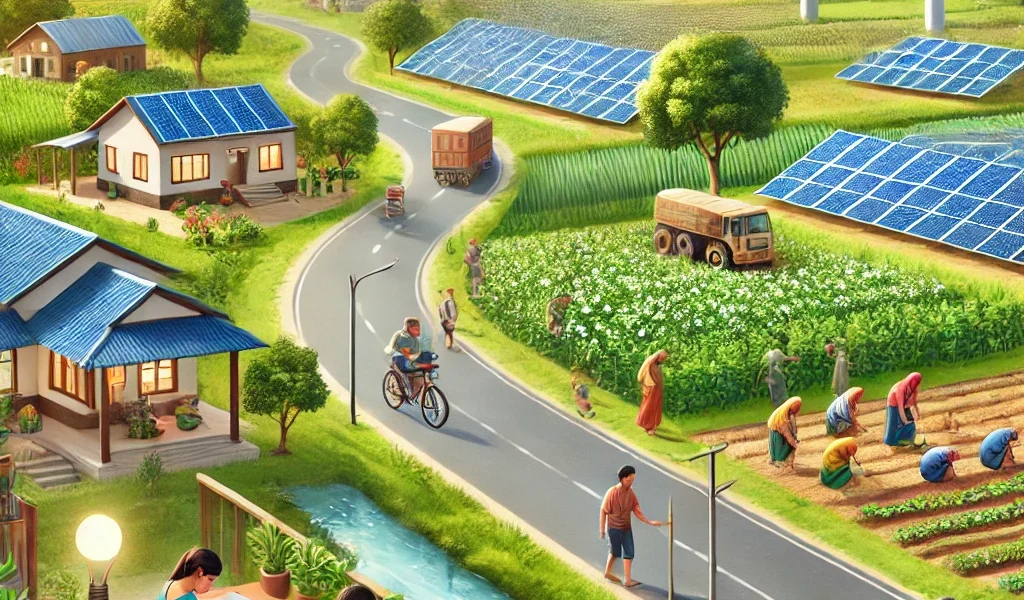Rural development plays a crucial role in ensuring balanced economic growth, improved living conditions, and enhanced infrastructure in villages. To bridge the gap between urban and rural areas, governments worldwide offer various subsidies and grants that support agriculture, infrastructure, healthcare, education, and entrepreneurship in rural regions. These financial aids empower communities, promote self-sufficiency, and drive sustainable development.
This article explores different rural development subsidies, eligibility criteria, and application processes to help individuals and communities benefit from government support.
Understanding Rural Development Subsidies
What Are Rural Development Subsidies?
Rural development subsidies are financial assistance programs provided by the government to improve the quality of life in rural areas. These subsidies aim to:
- Enhance agricultural productivity
- Improve rural infrastructure (roads, electricity, water supply, sanitation, etc.)
- Support small-scale industries and entrepreneurship
- Expand education and healthcare facilities
- Promote sustainable development projects
By availing these subsidies, rural communities can boost their economy, create employment opportunities, and foster innovation.
Types of Government Subsidies for Rural Development
1. Agricultural Subsidies
Agriculture is the backbone of rural economies. Governments provide various subsidies to support farmers and agribusinesses, such as:
- Crop Production Grants: Financial aid for seeds, fertilizers, and pesticides
- Irrigation and Water Conservation Subsidies: Support for building irrigation systems and water conservation techniques
- Farm Equipment Subsidies: Discounts on tractors, harvesters, and modern machinery
- Organic Farming Grants: Incentives for sustainable and eco-friendly farming practices
2. Infrastructure Development Grants
To improve living standards, governments invest in rural infrastructure by funding:
- Road Construction and Maintenance
- Electrification and Renewable Energy Projects
- Sanitation and Drinking Water Projects
- Housing Subsidies for Low-Income Families
3. Rural Healthcare and Education Grants
Healthcare and education are fundamental for rural prosperity. Government support includes:
- Medical Subsidies for Clinics and Hospitals
- Telemedicine and Mobile Health Units
- Education Grants for Rural Schools and Colleges
- Scholarships and Financial Aid for Rural Students
4. Small Business and Entrepreneurship Subsidies
To encourage local businesses and job creation, governments offer:
- Start-up Grants for Rural Entrepreneurs
- Low-Interest Business Loans
- Women and Minority Business Development Grants
- Skill Development and Vocational Training Programs
5. Environmental and Sustainability Grants
Many rural development programs focus on environmental conservation, including:
- Afforestation and Land Restoration Projects
- Renewable Energy Initiatives (Solar, Wind, Biomass Energy Subsidies)
- Waste Management and Recycling Grants
Eligibility Criteria for Rural Development Subsidies
Eligibility requirements vary depending on the program and country, but common criteria include:
- Residency in a Rural Area: The applicant must reside or operate in a designated rural zone.
- Income Level: Some grants are targeted at low-income individuals and families.
- Type of Project or Business: Certain subsidies apply to specific industries such as agriculture, healthcare, or education.
- Compliance with Sustainability Guidelines: Many funding programs require adherence to environmental and social sustainability standards.
How to Apply for Rural Development Subsidies
Step 1: Research Available Programs
Visit official government websites or local administrative offices to check for available rural development subsidies.
Step 2: Gather Required Documents
Commonly required documents include:
- Proof of residency
- Income statements
- Business or project proposal
- Bank account details
- Any additional certifications required for the subsidy
Step 3: Fill Out the Application Form
Complete the online or offline application form accurately and attach necessary documents.
Step 4: Submit and Follow Up
After submission, track the status of your application and be prepared to provide additional details if requested.
Tips to Maximize Your Chances of Approval
- Clearly Define Your Goals: Clearly state how the subsidy will benefit your project and the rural community.
- Ensure Compliance: Follow all government guidelines and policies.
- Seek Professional Help: Consult financial advisors or rural development agencies to improve your application.
- Keep Updated: Stay informed about new subsidy programs and deadlines.
Conclusion
Government subsidies for rural development are essential in empowering communities and fostering economic growth. Whether you’re a farmer, entrepreneur, healthcare provider, or educator, taking advantage of these subsidies can make a significant impact on your village’s progress.
By understanding the available options, meeting eligibility criteria, and following the right application process, rural residents can transform their communities, boost local economies, and create a better future.




